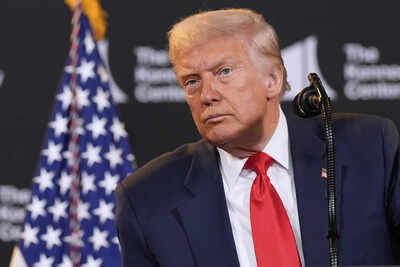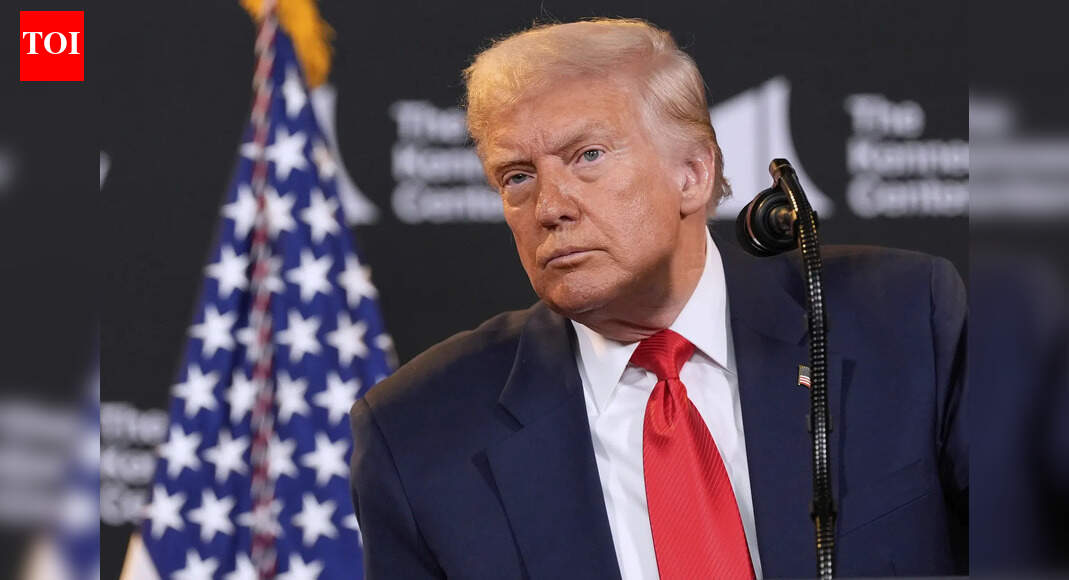 US President Donald Trump has vowed a tariff rebate of $2,000 to Americans next year, offering a potential financial boost to millions facing high costs of living. “We’ve taken in hundreds of billions of dollars in tariff money. We’re going to be issuing dividends…probably the middle of next year, a little bit later than that, of thousands of dollars for individuals of moderate income, middle income,” Trump announced earlier on Monday.Experts, however, beg to differ, as the promise still faces a long and thorny road ahead. Scott Lincicome, vice president of general economics at the Cato Institute, told CNN, “It’s highly unlikely there is some sort of stimulus check sent out next year. I would be pretty shocked.” Even prediction markets reflect scepticism: users on Polymarket assign just an 11% probability that a tariff dividend will arrive by March 31.
US President Donald Trump has vowed a tariff rebate of $2,000 to Americans next year, offering a potential financial boost to millions facing high costs of living. “We’ve taken in hundreds of billions of dollars in tariff money. We’re going to be issuing dividends…probably the middle of next year, a little bit later than that, of thousands of dollars for individuals of moderate income, middle income,” Trump announced earlier on Monday.Experts, however, beg to differ, as the promise still faces a long and thorny road ahead. Scott Lincicome, vice president of general economics at the Cato Institute, told CNN, “It’s highly unlikely there is some sort of stimulus check sent out next year. I would be pretty shocked.” Even prediction markets reflect scepticism: users on Polymarket assign just an 11% probability that a tariff dividend will arrive by March 31.
Less inflow, more outflow?
While tariffs are generating revenue, the cost of rebate checks could exceed incoming funds. Trump’s new tariffs are expected to raise $158.4 billion in 2025 and $207.5 billion in 2026, according to the Tax Foundation. The foundation also modelled dividend scenarios: Checks limited to tax filers and spouses with a $100,000 individual income cap could cost $279.8 billion – $121 billion above projected revenue.
Expanding payments to include non-filers, spouses, and dependents could push costs to $606.8 billion, nearly double the expected 2025–26 tariff revenue.But the problem with these predictions is that the overall value in all these situations would still exceed the incoming money.
Congressional support….or maybe not?
Approval from Congress is another major barrier. Republican lawmakers concerned about deficits may resist allocating $300–600 billion in additional spending. The national debt, having surpassed $34 trillion in January 2024, now sits at $38 trillion, CNN reported.
Trump’s promise may backfire
While the rebate could relieve financial strain for households, some economists warn it could worsen inflation. Additional consumer spending without a corresponding increase in supply can push prices higher. Stephen Moore, co-founder of Unleash Prosperity and former Trump economic adviser, said, “Sending out checks to people is a bad way to stimulate the economy. If there is tariff revenue, that should be used to cut income taxes across the board. Stimulus checks only stimulate inflation.” Using tariff revenue for dividend payments could also unsettle bond markets, raising Treasury yields and making loans and mortgages more expensive. Ed Mills, a Washington policy analyst at Raymond James, noted, “What Congress and Trump are trying to do with stimulus, the bond market could take away instantly.”
Legal obstacles
Legal uncertainty adds another complication. During Supreme Court hearings this month, justices questioned the use of emergency powers to impose global tariffs. The Tax Foundation estimates that potentially invalid tariffs make up roughly 75% of the projected new revenue. “If the Supreme Court says the bulk of the tariffs are illegal, that could throw a wrench in the tariff rebate plan,” Erica York, vice president of federal tax policy at the Tax Foundation told CNN.
When, if at all, the rebate could arrive
With all the above reasons, traders are not counting on the promise to materialise. For now, Wall Street investors remain cautious. Bob Elliott, CEO of alternative investment firm Unlimited, said, “We’ve learned that late night Truth Socials are not a direct line to reality.” One scenario in which the checks could become reality is an economic emergency. Rising unemployment or a weakened job market could force the White House to argue that direct payments are necessary to prevent a recession. “It’s almost like we shouldn’t want stimulus checks to happen,” Mills said. “Because it would be an indicator of something wrong. This is a break-the-glass, use in case of emergency tool.”

